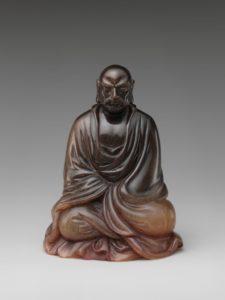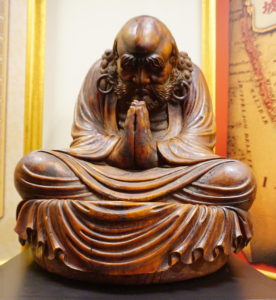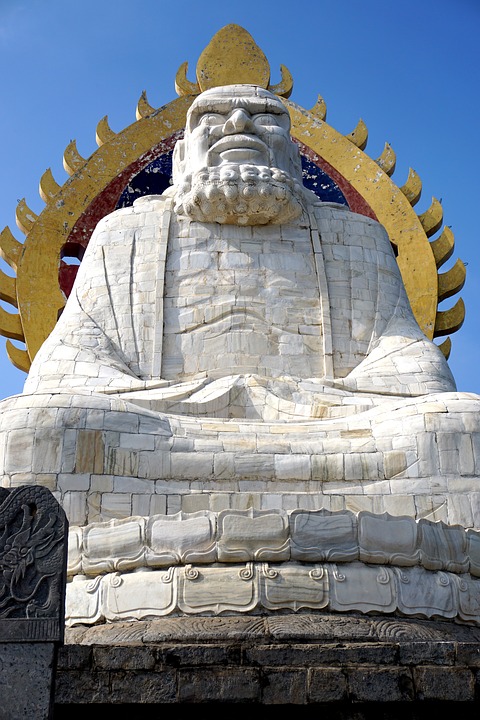In Buddhism who is Bodhidharma?
In the tradition and teachings of Buddhism in East Asia, a very prominent individual is Bodhidharma. Bodhidharma’s life history is very ambiguous, yet his life is relatively well known, which may sound a little paradoxical. The main task of historians, generally, is to try to reveal the facts behind the myth. The manuscripts relating to Bodhidharma are viewed by historians as texts that need to be deciphered using the historical technique in order to reveal their buried truths. His importance, consequently, is paradigmatic and emblematic, not personal, and it has been enhanced by both religious discourse and common imagination.
Bodhidharma and several works attributed to him
We have many biographical notices concerning Bodhidharma and several works attributed to him. The work entitled ‘Treatise on the Two Entrances and Four Practices’, generally accepted as written sometime in the 6th century CE, claims that he was a South Indian monk who came to China to transmit the essence of Mahayana teachings. After his arrival in Canton, he went to Lo-yang, then the capital of the Northern Wei.
 Within the ‘Record of the Buddhist Monasteries of Lo-yang’, written by Yang Xuanzhi, Bodhidharma was a very old Central Asian monk who spent several days singing in praise of the great stupa in the Yung-ning monastery.
Within the ‘Record of the Buddhist Monasteries of Lo-yang’, written by Yang Xuanzhi, Bodhidharma was a very old Central Asian monk who spent several days singing in praise of the great stupa in the Yung-ning monastery.
In the ‘Continued Biographies of Eminent Monks’ (written by Doxun), Bodhidharma is contrasted with the dhyana master Seng-ch’ou, whose method of meditation, although deemed of a rather inferior type, was quite popular. Bodhidharma relied on the teaching of emptiness, whose purport is obscure and deep. Due to this fact, his principle was intrinsically difficult to comprehend.
Bodhidharma’s name appears sometimes truncated as Bodhi, or more often as Dharma (Ta-mo), which, in the first case, it may be confused with another of his rivals, Bodhiruci.
Though the story of Bodhidharma is focused in China, it is in Japan that he attained, and still continues, his utmost popularity and recognition. There he is an omnipresent individual, known informally as Daruma (McFarland, p.167). Within the earliest portraits, both in China and Japan, Bodhidharma is shown as a distinguished person, befitting the illustrious acknowledgment as the ‘First Patriarch of Ch’an’ (Zen). Furthermore, among present-day practitioners of certain martial arts, Bodhidharma is esteemed as a patron saint.
Debate on the Historical value of Bodhidharma
There has been some debate amongst scholars as to the historical value of Bodhidharma. One scholar remarks, “In the case of Ch’an historiography, a teleological conception of history appears to hold sway, one which takes classical Japanese Zen as the logical end of the Ch’an tradition, which in turn makes the “search for the real Bodhidharma” meaningful only as a legitimation of the Zen tradition. If Bodhidharma was no more than an ordinary Central Asian monk, we may as well dismiss him as irrelevant to an understanding of the Ch’an and later Zen traditions. Bodhidharma does not, then, deserve attention as a historical person; and Buddhist historiographers should perhaps stop searching for “eminent monks” and writing their “biographies.” The biographies that exist already have literary but not historical value; Bodhidharma should be interpreted as a textual and religious paradigm and not be reconstructed as a historical figure or a psychological essence” (Faure, p.189 – 90).
 Bodhidharma is one of the great figures of Mahayana Buddhism. Throughout his life and after his death, he has influenced and inspired millions of people, both in the east and the West. Despite the problems surrounding his historical life, Bodhidharma is an essential part of the Zen tradition and will continue to fascinate and inspire in the future.
Bodhidharma is one of the great figures of Mahayana Buddhism. Throughout his life and after his death, he has influenced and inspired millions of people, both in the east and the West. Despite the problems surrounding his historical life, Bodhidharma is an essential part of the Zen tradition and will continue to fascinate and inspire in the future.
Bibliography:
Faure, Bernard (1986) Bodhidharma as Textual and Religious Paradigm, History of Religions, The University of Chicago Press.
McFarland, H. Neill (1986) Feminine Motifs in Bodhidharma Symbology in Japan, Asian Folklore Studies, Nanzan Institute For religion and Culture.





